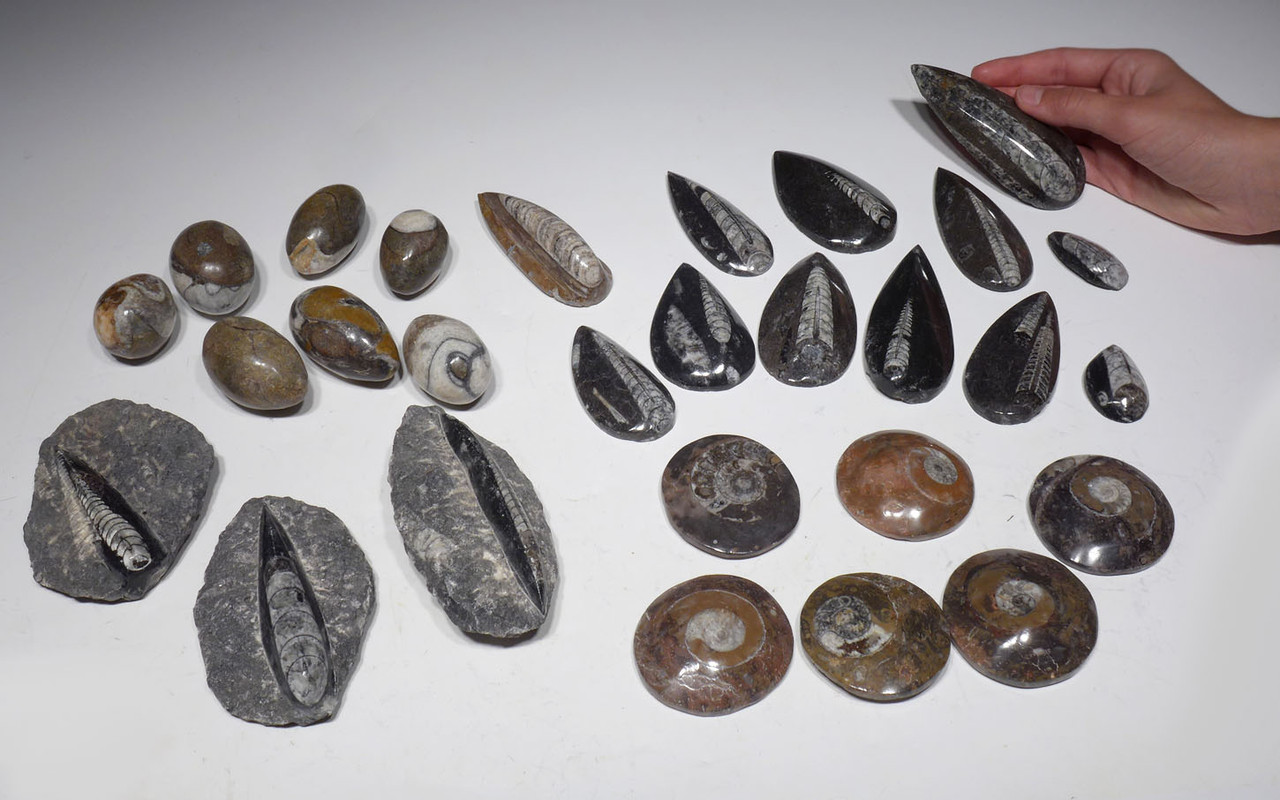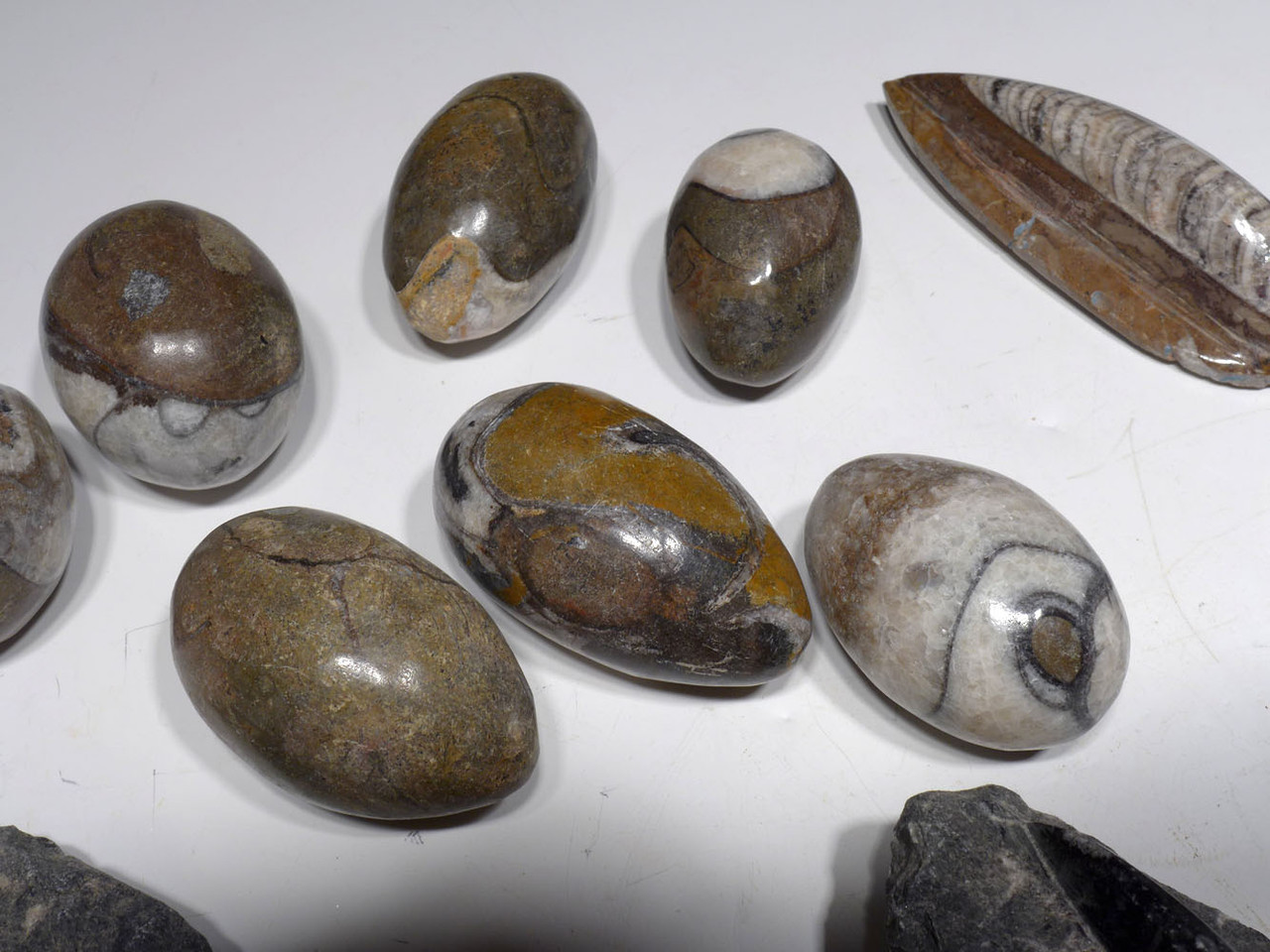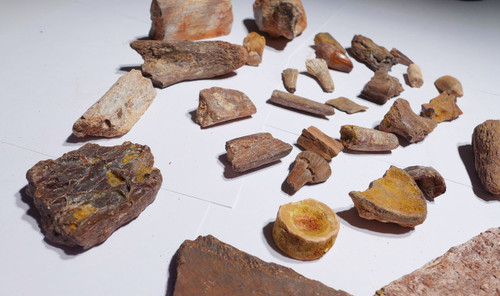Product Description
Perfect for gifts for kids, parties, etc, or ideal for teaching or educational aids, this polished fossil collection includes two of the predominant forms of prehistoric sea life - goniatites and orthoceras. Both of these types of ancient ocean life were cephalopods - one was coiled and one was straight. The set includes some rough stone pieces with the polished orthoceras fossils on their original rock. The remaining of the collection includes polished forms of goniatites and orthoceras.
Each of these unique handcrafts were made out of a solid block of what was once the bottom of a 450 million prehistoric ocean floor. They are filled with natural fossils on all sides! Featured are fossils of extinct types of ancient cephalopods that once lived in the ocean before any living creature walked the Earth! The color and fossils are completely natural and well-detailed.
SEE MORE FOSSIL STONEWARE AND GIFT ITEMS
HISTORY
Straight cephalopods were among the most advanced invertebrates of their time having eyes, jaws, and a sophisticated nervous system. These creatures were predators that swam freely using a jet propulsion system by squirting water from their bodies. They had tentacles and ink sacs also much like the present-day squid. Except for belemnites, cephalopods had external shells with hollow internal chambers separated by walls called septa. A tube called the siphuncle, connected the body with the chambers allowing the animal to fill them with water or air, changing its buoyancy in order to rise or drop in the ocean. Only the last and largest chamber was occupied by the living animal. Belemnites were different in that they had internal shells called 'guards' which were covered with the soft, muscular tissues of their bodies. These shells were also chambered but much less complex than the straight varieties of nautiloids and ammonoids.
Ammonites are extinct invertebrates that shared the same fate as the dinosaurs, going extinct at the end of the Cretaceous Period, 65 million years ago. Modern relatives of ammonites include the nautilus, squid, cuttlefish and octopus. Because ammonites lived exclusively in marine environments, their presence also indicates the location of prehistoric seas. Ammonites varied greatly in size. The largest known ammonites have been found in Europe and grew to massive sizes exceeding 2 meters (6.5 feet) across. This is the exception, of course. Average diameters throughout the ages showed that most ammonites grew to sizes not much larger than a man's hand. Some ammonites were only as large as 2 cm (0.75 inches) in diameter.
 US DOLLAR
US DOLLAR
 EURO
EURO
 AUSTRALIAN DOLLAR
AUSTRALIAN DOLLAR
 CANADIAN DOLLAR
CANADIAN DOLLAR
 POUND STERLING
POUND STERLING




















